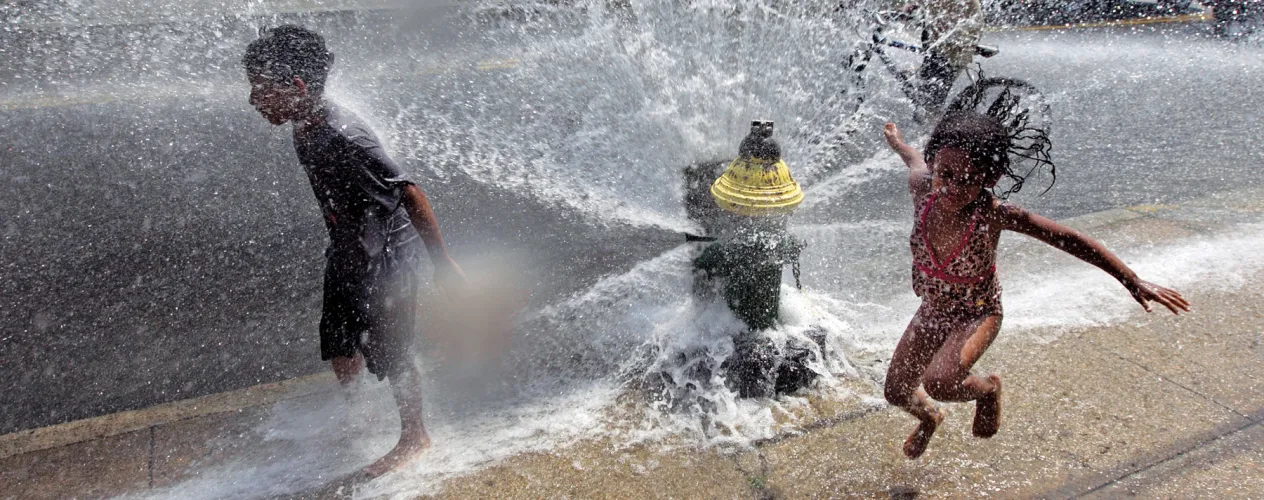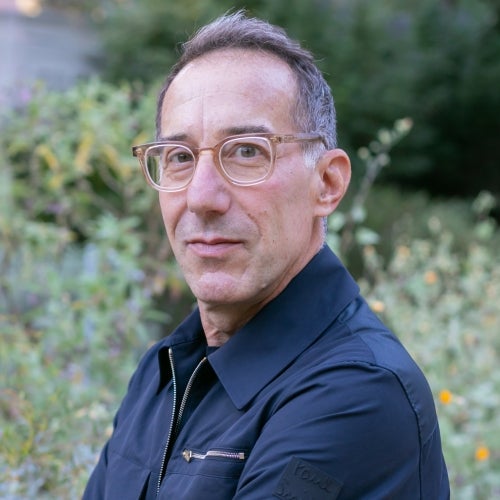Boiling Point
Heat waves cause more deaths and hospitalizations in the U.S. than any other weather-related disaster. As temperatures rise, FSPH’s Dr. David Eisenman is among the experts studying solutions.

AS AN EXPERT IN DISASTER PREPAREDNESS AND RESPONSE whose work has increasingly focused on the weather events that are occurring with growing intensity and frequency as the climate changes, Dr. David Eisenman has observed that one type of natural disaster is often overlooked.
“Heat waves don’t make the news in the same way as hurricanes, earthquakes and floods, but heat is already the leading weather-related cause of death in the United States, and with climate change it will only grow as a concern,” says Eisenman (MS ’02), professor in residence in the Fielding School’s Department of Community Health Sciences and director of the FSPH-based Center for Public Health and Disasters. “It’s also an equity issue, because the most vulnerable members of our society tend to be the ones who are at the greatest risk.”
In addition to his work as a practicing physician, Eisenman conducts research to better understand who is most vulnerable to heat illness and death, in part by examining health outcomes data in conjunction with historical weather data. Populations that are most susceptible include the elderly, young children, people with chronic diseases and individuals who are homeless or otherwise impoverished. In Los Angeles, as in many other cities in the U.S., more than half of households lack central air conditioning, and low-income families are the most likely to be forced to endure high temperatures with a wall unit at best, Eisenman says.
He and his colleagues (including Linda Delp and Kevin Riley of the Fielding School-based UCLA Labor Occupational Safety and Health Program) have described another population vulnerable to extreme heat, outdoor laborers — finding, for example, that every 1-percent increase in residents who work in construction within a community results in an 8-percent rise in heat-related hospitalizations and emergency department visits. “It’s clear that we need to be thinking about this problem both in the workplace and in the community,” Eisenman says. “We also have to keep in mind that many of these workers come home to neighborhoods with little shade and no air conditioning, so they aren’t able to cool off.”
For people without access to air conditioning at home or work, the U.S. Centers for Disease Control and Prevention recommends cooled public facilities such as shopping malls and libraries during heat waves. Eisenman’s group, including Stephanie Pincetl of the UCLA Institute of the Environment and Sustainability, has found that in extreme temperatures, heat-related deaths are lower in neighborhoods with more publicly accessible cooled spaces. Many cities have also established cooling centers as refuges, but Eisenman notes that these tend to be inaccessible to the people who need them most. “They’re often not placed in the neighborhoods where we see the most harm from heat waves,” he says. Moreover, Eisenman has found that even when cooling centers are conveniently located, they are underutilized: “People prefer to go somewhere cool where there is an activity they want to be doing, such as going to the mall, rather than just going to a community center to cool off.”
Heat is already the leading weather-related cause of death in the United States, and with climate change it will only grow as a concern.
Low-income communities often experience what’s known as the urban heat island effect, where the high concentrations of pavement and other surfaces that retain heat, along with minimal tree canopy to provide shade, lead to hotter temperatures during the day and less cooling off at night. “We have increasing evidence that if you put more green space into a community, and it’s well maintained, the temperatures go down both outside and in people’s homes, where they spend most of their time,” Eisenman says. He has begun collaborating with the Los Angeles-based nonprofit organization TreePeople to study the impact of increasing tree canopy and albedo (reflective surfaces that absorb less heat) as a strategy to reduce heat illness and mortality.
To help public health planners and policymakers know where to focus their efforts, Eisenman is mapping heathealth outcomes in Los Angeles County, using 10 years of data on heat-related emergency department visits, hospitalizations and deaths. The work has challenged traditional assumptions. “In Los Angeles, the map of social vulnerability doesn’t neatly overlap with the map of actual heat-health outcomes,” Eisenman says. “At the county level we can predict who is at risk, but Los Angeles has so many different climates that we can’t just look at maps of social vulnerability to plan our programs.”
As a potential long-term solution, Eisenman is working with engineers from Arizona State University on a way to measure individual-level heat exposure over the course of a day. The project, funded by the National Science Foundation, involves developing sophisticated mathematical models in an effort to understand the threshold for heat absorption beyond which an individual is at risk for negative health outcomes. “The idea is that valid individual-level estimates would be much more predictive of heat vulnerability than community- level measures,” Eisenman explains. “And once we have that understanding, we might also be able to model how changes in the community and in daily activities could reduce an individual’s absorption of heat.”
In many ways, public health research on heat illness and deaths is in its infancy. “In the past we would rely on gross indicators for weather, even though in Los Angeles the temperatures are going to be very different depending on whether you’re by the ocean, in Downtown Los Angeles or in the high mountains,” Eisenman notes. “In addition, heat-related illness and deaths are undercounted — when people are hospitalized or die from heat-related causes, that’s not necessarily what’s written on their chart or on their death certificate. And we need to develop better predictors of vulnerability. These are all important limitations that we must overcome as researchers — and as climate change brings more extreme heat, this work will continue to take on greater urgency.
